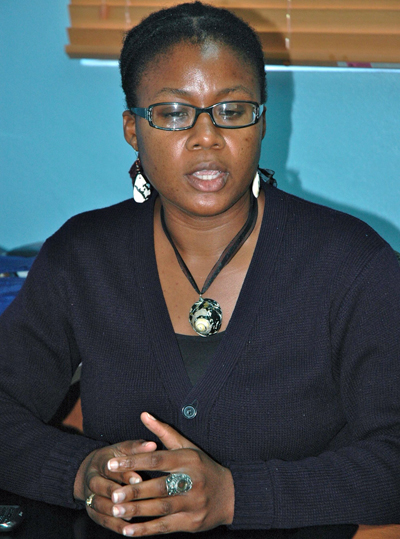|
From:TheBahamasWeekly.com Bahamas Information Services Updates
The endeavour involving the Summit Series, the Conservancy and the Government of The Bahamas implementing the Caribbean Challenge Initiative's Caribbean Biodiversity Fund and the Bahamas Protected Area Fund, ensures that national parks will receive a reliable annual allocation of funds for management and stewardship. Participating CCI countries are Antigua & Barbuda, The Bahamas, Dominican Republic, Grenada, Jamaica, St. Kitts & Nevis, and the British Virgin Islands, which have committed to establishing national systems of protected areas covering at least 20 percent of their near-shore marine coastal environment by 2020. Discussions are underway with the Cayman Islands and Puerto Rico regarding participation.
"The Bahamas was actually one
of the initial countries to participate and to announce their commitment
to this 20/20 Caribbean Initiative Challenge, said Shenique Albury,
Senior Policy Advisor of the Nature Conservancy's Northern Caribbean
Programme.
She said since then the programme has been working with local partners on the ground, with the expansion of marine protected areas in The Bahamas. "One of things that we are looking at with the CCI, is more increasing protection of the marine protected areas in the Caribbean but more specifically in The Bahamas," said Ms. Albury. "The second part of that is that we want to have the financial resources in place to make sure that we can effectively manage these parks. We don't want paper parks. We want parks that have the proper infrastructure in place, educational outreach, proper staff where the staff are properly trained, and the tools and implements they need to move with. All of this is quite expensive and it takes a lot of money." Ms. Albury said the Nature Conservancy is only waiting for the government to consider accepting the draft legislation before the House of Assembly that would give BPAF the legal strength to function in The Bahamas and raise funds for the Caribbean nations that qualify for marine protection. Three years into the Caribbean Challenge Initiative, 10 governments, including The Bahamas, are developing national trust funds and funding mechanisms such as tourism fees to provide sustainable revenue streams for protected area management. The Caribbean Biodiversity Fund (CBF), a $40 million regional endowment will provide annual matching funds to the national level trusts. The CBF is soon to be established as a UK-based charity and will begin grant-making in 2013, in time for a Conservancy delegation to mobilise additional CCI funding with European government donor agencies with promising results. Speaking on the difference of roles that environmental organisations play in the national interests, Ms. Albury defined the limits of the Bahamas National Trust and the limits of the Department of Marine Resources. The BPAF fund would close the gap between them and allow a source of funding for all organisations involved in marine protection within the proposed legislation. "Actually what's quite interesting is that the National Trust has its specific legislation that deals with them specifically, as an entity or organisation. However, in terms of the management of protected areas, particularly marine protected areas in The Bahamas, the portfolio is beyond that of the National Trust," said Ms. Albury. "The National Trust has national parks that include marine protected areas, but we also have things such as the marine reserves. The Marine reserves are actually under the purview of the Department of Marine Resources," she said. Ms. Albury said there are three that have been declared and another two or three that have been proposed to the government that rate hoped to be declared in the near future. She noted that there are also the historical areas that could possibly come under the Antiquities and Monuments that may have a marine element. "So, what the BPAF is going to do is, it's going to actually level the playing field. It's going to level the scope in terms of, rather the specific legislation which only covers the Bahamas National Trust, this protected areas fund is going to be generating financial resources that will be accessible to the National Trust, and also other persons." Ms. Albury said since 2000, the Bahamas Government created the South Berry Islands Marine Reserve, a 70 square mile no-take zone in The Bahamas' most ecologically diverse marine area. She said over the last decade limited financial and technical resources have attributed to the site remaining unprotected, unmanaged and vulnerable to overfishing.
"So, we're looking at it a lot
more holistically, or the big picture. We realise that the Bahamas National
Trust is the main person in the country who is managing protected areas
in terms of the marine element and will continue to be perhaps for some
time. There are other persons out there who have this element in their
portfolio, so the BPAF is going to cover all of those," said Ms.
Albury.
|
